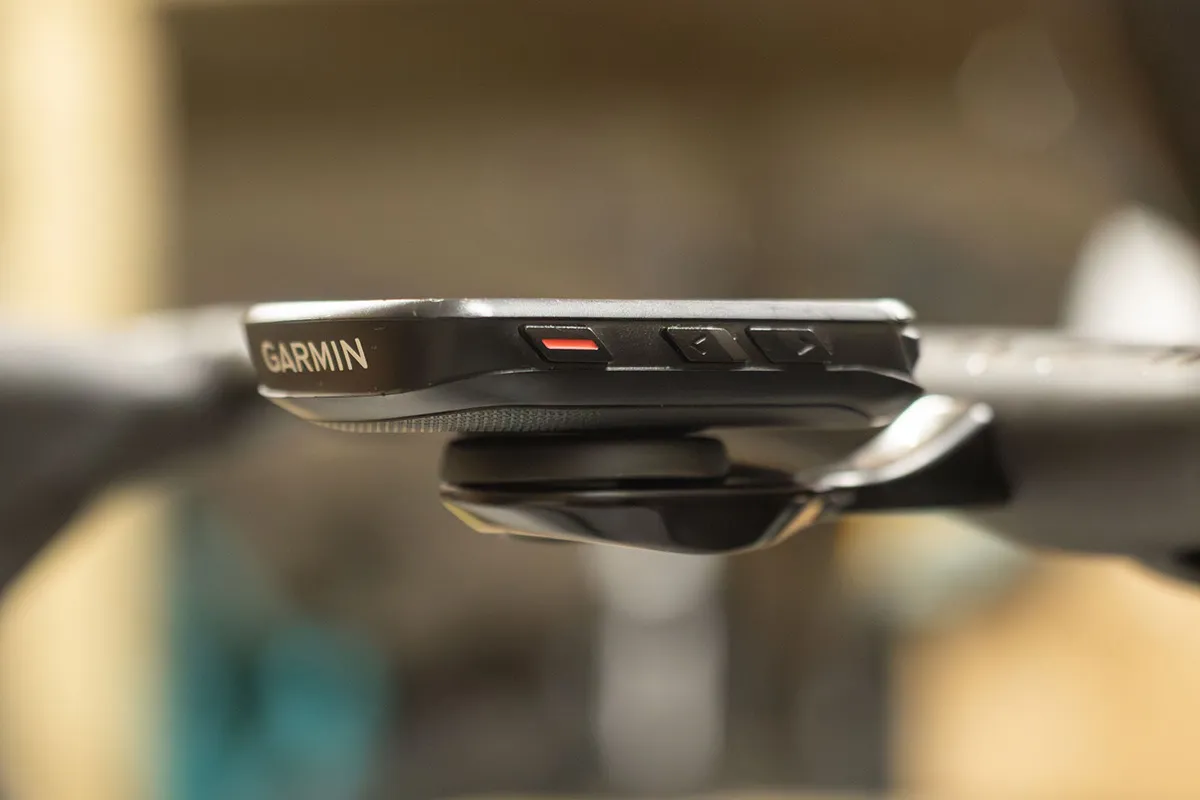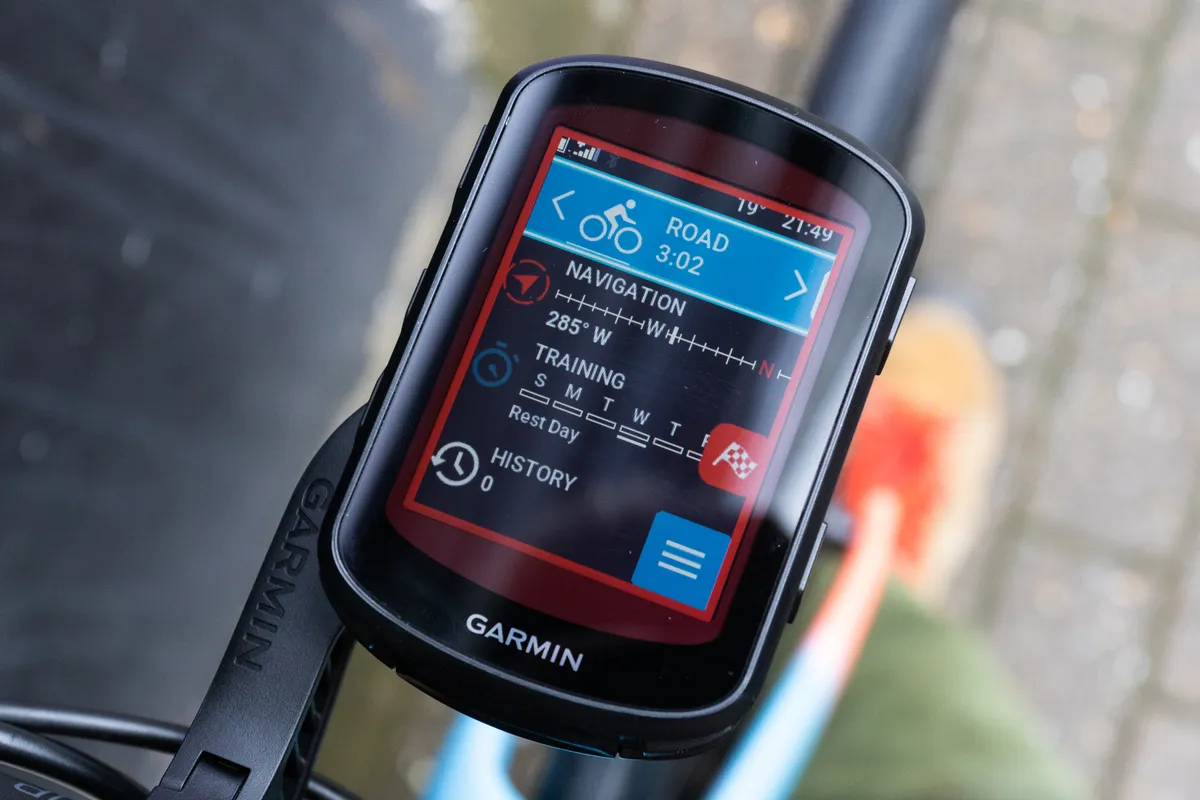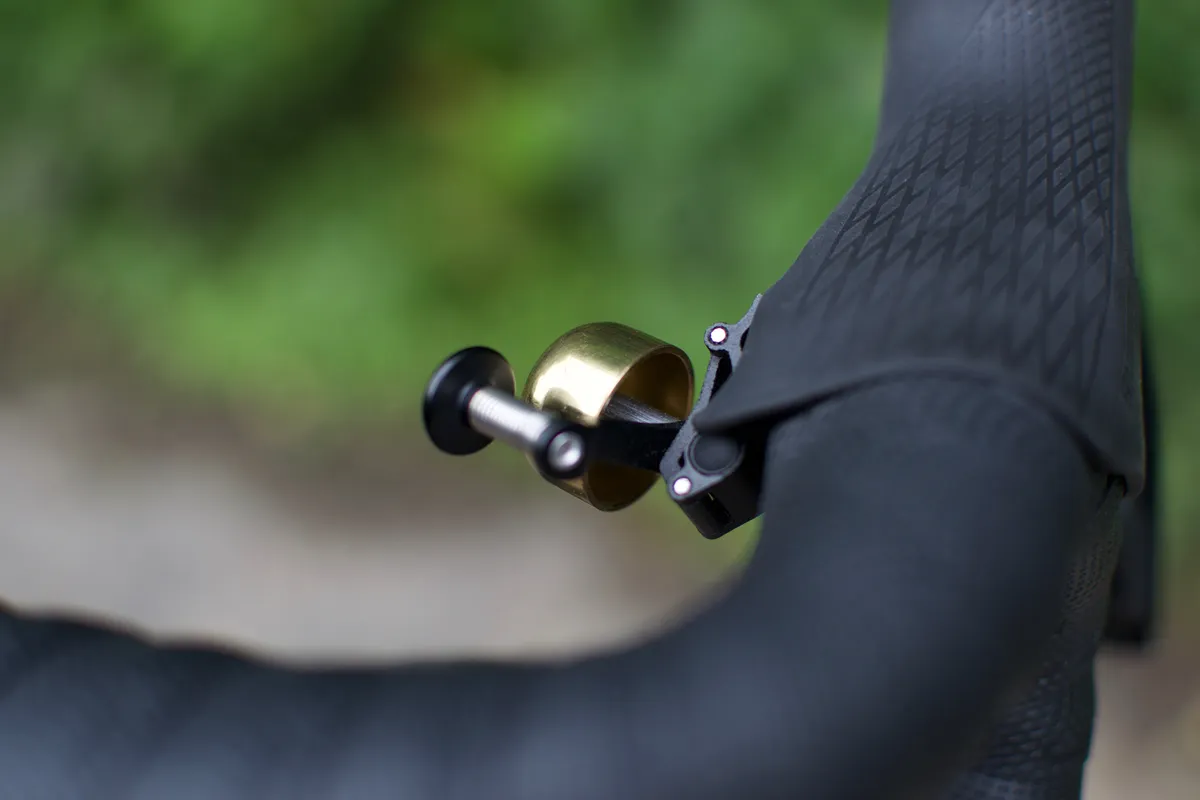It’s been a hot time for new bike computer launches lately, but we’re still awaiting new Garmin Edge 850 and 550 models – the GPS giant’s smaller-sized computers would replace the Edge 840 and 540.
First came the Garmin Edge 1050 in summer 2024, followed by Wahoo’s latest flagship unit, the Elemnt Ace, in December 2024.
We’ve now seen updates to the Wahoo Elemnt Roam and Bolt computers, the American brand planting something of a double-tap on its main rival, which means it's high time Garmin struck back with its own new-computer left hook.
In the past, 800 and 500-series Edge computers have tended to follow the 1000-series’ example, receiving tech trickled down from the flagship computer. There’s little reason to think the formula is set to change drastically, given it’s more economical for brands to develop tech in generations, rather than afresh for each product.
That said, there’s scope for speculation over what might be included in these new computers – the logical developments based on what we’ve seen in the latest Edge 1050, mixed with some design developments we find ourselves hoping for.
- Read our Garmin Edge 1050 vs Wahoo Elemnt Ace head-to-head review
- Our guide to the best bike computers in 2025
- Liam Cahill tested 12 bike computers in a day – which one came out on top?
1. Improved screens

This has been a bugbear of mine for many years, but while the latest Garmin Edge 1050 screen is the best I’ve seen on a Garmin bike computer, it’s not quite on a par with smartphones.
While I’d love to see an edge-to-edge display on the smaller form-factor Edge 850 and 550 computers, this is highly unlikely. In fact, Garmin stuck with the same screen size with significant bezels for the Edge 1050 versus the 1040, which indicates the same might happen again.
Instead, we’re more likely to see similar panel tech ported over, with increased colour range, brightness and detail compared to the Edge 840 and 540 (and their solar siblings).
Previously, the 800 and 500-series screens have been near-identical in terms of clarity, but the next generation could offer an opportunity for Garmin to separate them a little.
Rather than short-changing those who aren’t bothered by touchscreen functionality, though, I’d hope this would help make the Edge 550 another step cheaper than the Edge 850.
2. Form factor changes

Aside from the screen, I think it’s unlikely that the Edge 850 and 550 computers will see significant alterations to their physical design.
Unlike the Edge 1050, which saw the quarter-turn mount interface shifted significantly up the device to help manage the 34g weight increase and stop it oscillating so much over rough ground (rendering many existing out-front mounts useless), there’s far less need to address this with the smaller Edge computers.
That said, I’m hoping to see a more premium finish applied to the Edge 850 at least, mirroring that of the Edge 1050.
Given that these lighter, smaller computers are popular for racing, a slimmer overall design may help set Garmin apart – especially given the thicker body of the latest Wahoo Elemnt Bolt (shrouding mount, and all).
Garmin might also consider separating the designs to help distinguish the Edge 850 and Edge 550 – aside from the touchscreen and memory differences (see point 5) and a small price difference, there’s very little to choose between the Edge 840 and Edge 540.
As Wahoo has with the Elemnt Roam and Bolt 3, treating the Edge 850 as a mid-sized, mid-tier compute – and the Edge 550 as a notably smaller, leaner unit – could pay dividends in organising the range and tailoring each to specific users.
3. Updated software and faster performance

The Edge 1050 debuted a refreshed user interface for Garmin – instantly familiar, but with some graphical and speed improvements (supported by an upgraded processor), which improved the overall user experience.
I want to see the same applied to both the Edge 850 and 550, but with adequate adaptations made for the smaller screen sizes.
It’s also worth noting that the Edge 1050’s user interface is so good because of its best-in-class touchscreen responsiveness. Assuming the Edge 550 remains non-touchscreen, relying on physical buttons to navigate, I’d hope usability will be just as good.
4. Improved solar charging capability… or don’t bother

The Garmin Edge 840 and 540 saw solar-charging iterations launch alongside standard computers. On the face of it, this was a great idea for long-distance riders and bikepackers, but added additional cost for little gain for all but a specific few.
Liam Cahill felt the capability wasn’t worth the extra cost in his review of the 840, though. My own experience suggests that recharging is only really effective on bright sunny days (obviously).
Of course, one could just buy the non-solar version, but the presence of these devices in the range is arguably an unnecessary distraction, tempting riders into buying a more expensive computer than they really need.
If we’re to see solar models again, a larger or more sensitive solar panel may help solve these issues and justify the extra cost.
However, the flagship Edge 1050 is conspicuous because it hasn’t got a solar-charging sibling. Could this be a sign of things to come from Garmin?
5. Bump up the Edge 540’s stingy memory

The Edge 540 has 16GB of memory, the Edge 840 32GB and the Edge 1050 64GB (the same as the Edge 1040, incidentally).
I’ve not heard or read anyone complaining that the Edge 840 and 1040/50 had too little memory, but the 540 looks pretty sparse by comparison.
Interestingly, the memory allocation for course, ride and statistical data is the same between all three computers – what changes is the allocation for mapping. This makes plenty of sense for the Edge 1050, which has a larger screen and physical form (not that storage chips in 2025 are space-hoggers).
However, the Edge 540 can be quick to fill up, especially if you install full European or US maps (for example), which might have an effect on the overall performance of the unit. Addressing this would be an easy task without compromising on the positioning of either unit.
6. Latest GroupRide and hazard alert features

This is a must if these features, which debuted on the Edge 1050, are to become ingrained and adopted by the Garmin-riding community.
GroupRide has been around for a while, representing a basic ability to view where other compatible Garmin-using riders are on a chosen course, plus send messages. It saw a development to introduce competition and increased social activity for the Edge 1050.
Hazard alerts are arguably more impactful (being able to share the location of hazards to display on other users’ computers is undoubtedly a positive move for safety), but require a critical number of users. It was practically useless when I tested the Edge 1050, except to remind myself of a pothole next time I passed by, but has great potential.
Making this a feature for the Edge 850 and Edge 550 is an essential step to making effective crowd-sourced hazard data a reality.
7. That bell function

The Garmin Edge 1050 debuted a bell function thanks to an improved speaker system. Perhaps unsurprisingly, Wahoo integrated one into its Elemnt Ace rival flagship computer around six months later.
I’d expect to see the same function, enabled by improved speakers, to arrive on at least the Edge 840, and hopefully the Edge 540 too.
If nothing else, it can help draw attention, which is hardly a bad thing – but I’d like it to be more readily accessible.
On the Edge 1050, unless you assign the bell to a Shimano Di2 button, SRAM Wireless Blip or Red AXS’ Bonus Button, you have to press the screen to call up the bell function, before activating it with a second press. This is counterintuitive, given bells are used instinctively in response to sudden changes in situation.
This would be far better if it was accessible with a single touch, and could be the result of a simple software tweak that could be applied across the whole range. Assuming the Edge 550 remains non-touchscreen, could it receive a dedicated button for this feature?
